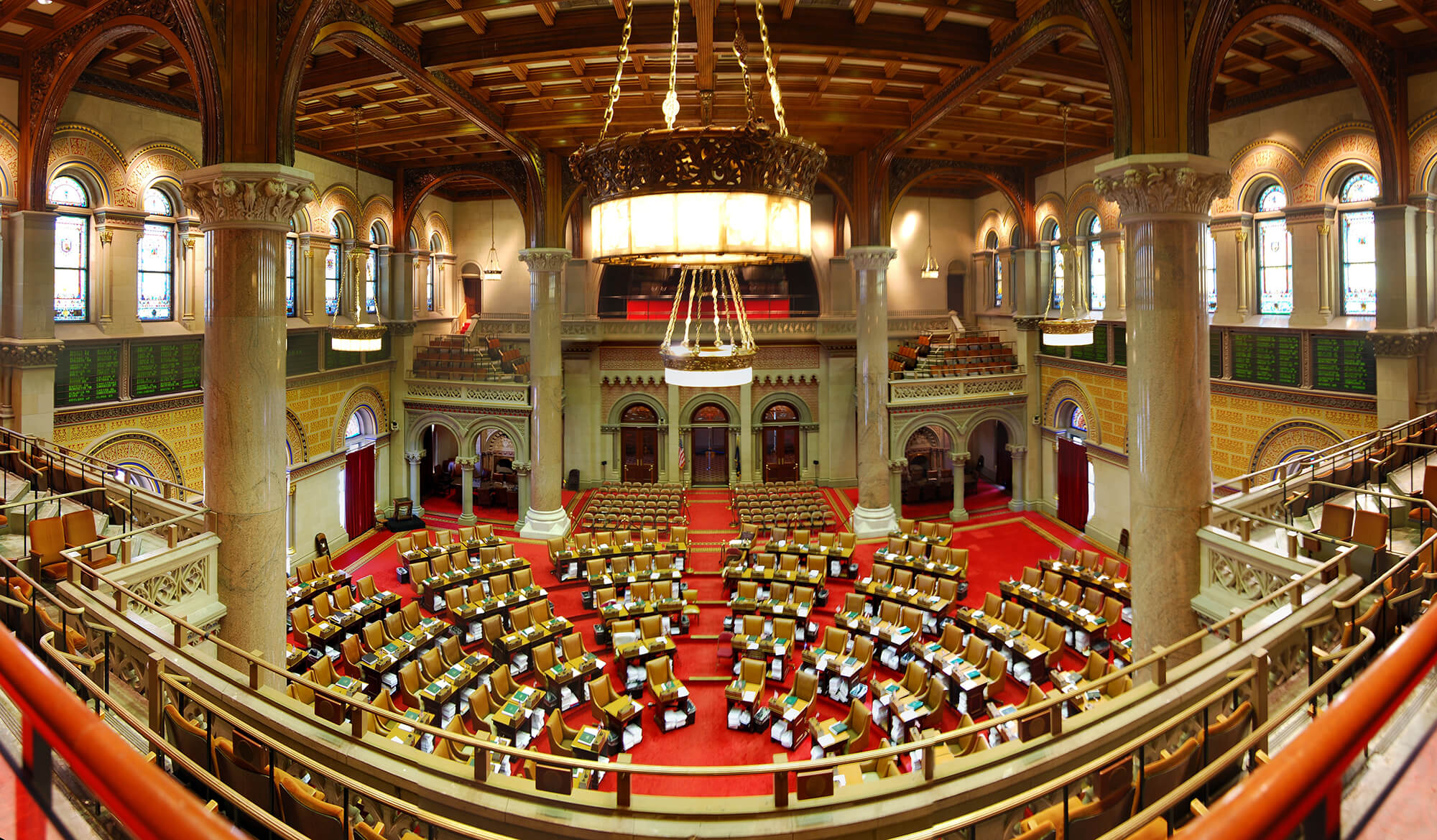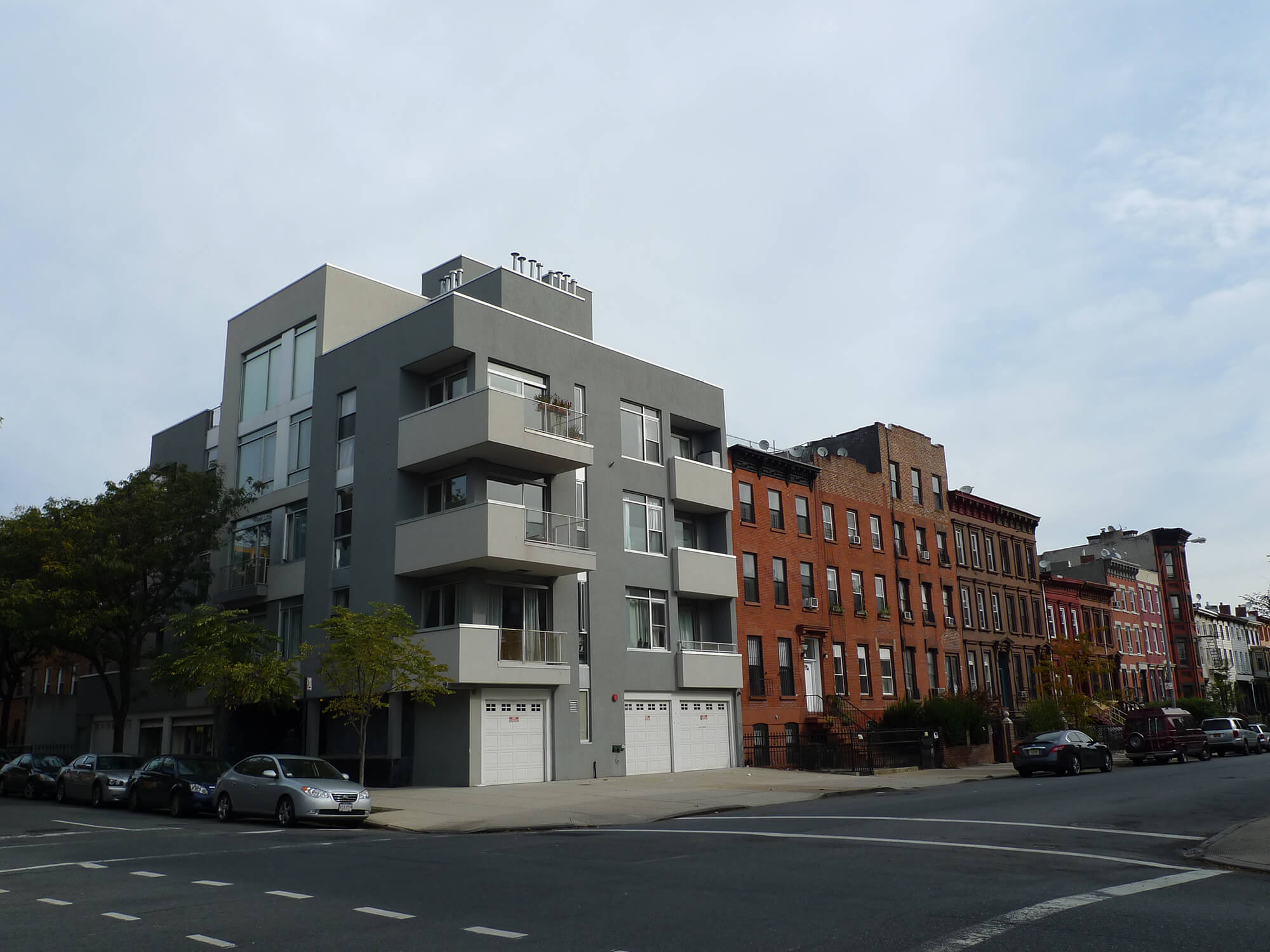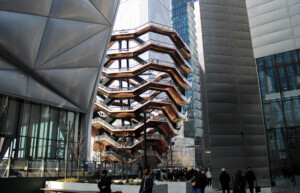Yesterday, two New York lawmakers rolled out a bill that would empower the state to build copious amounts of publicly-owned rental units from Brooklyn to Buffalo using 100 percent union labor.
If implemented, Bill No. A09088 could put thousands of unionized construction crews to work and help stifle New York City’s debilitating housing crisis, where every 73 of 10,000 people lack a home. The measure is in line with other recent state programs taking hold in Atlanta, Rhode Island and Maryland.
The legislation is sponsored by Harlem’s State Senator Cordell Cleare and Assembly Member Emily Gallagher, who represents north Brooklyn and parts of Queens. Its goal is to establish a “New York State social housing development authority as a public benefit corporation to increase the supply of permanently affordable housing in the state through the acquisition of land and renovation or rehabilitation of existing real property, and through the construction of new, permanently affordable housing.”
So far, the measure has been backed by the Working Families Party and Housing Justice for All, an eviction defense group. Much of the bill’s language takes cues from a resolution sponsored by the Democratic Socialists of America (DSA) which calls for “Green Social Housing.” According to Housing Justice for All coordinator Cea Weaver, Bill No. A09088 will pay dividends across the state, from Syracuse to Bedford-Stuyvesant.

In short, the Social Housing Development Authority can be read as a counter-proposal to affordable housing strategies proffered by Governor Kathy Hochul. Since taking office, Hochul has made housing construction a real priority, albeit at the whims of the private sector. Cleare and Gallagher’s bill takes a different approach that defies conventional neoliberal thinking in vogue since the 1990s, when the U.S. government divested from the housing sector.
Last year, Hochul vowed to build 800,000 new homes across New York state in her “New York Housing Compact.” Later, Hochul’s 485-x or Affordable Neighborhoods for New York incentivized developers to create affordable housing with 35-year-long tax breaks. Skeptics argue that Hochul’s plans aren’t working because the state doesn’t have any teeth to implement them: Myriad localities have thwarted housing developments in their communities by denying zoning overrides.
The Social Housing Development Authority would operate differently than today’s status quo. Rather than relying on private capital to spur construction, the new authority would channel state spending toward development and work with local community land trusts. It would rely on an upfront $5 billion investment from the state, followed by annual injections of $75 million to support operations and staffing. The authority, law makers say, would be tentatively managed by a 19-member board—11 of whom would be elected residents of Social Housing Development Authority properties, like NYCHA.

On paper, the development strategy is a hodgepodge of programs from New York’s past, ranging from early models championed by the New York City Housing Authority, the United Housing Foundation, and Mitchell-Lama. The Social Housing Development Authority would produce publicly-owned units, as well as publicly-stewarded rental units to raise income for the tenants, as well as cooperatively-owned units like those at Co-op City in the Bronx, or Penn South in Chelsea.
Gallagher said that the new bill could lead to all sorts of housing, ranging from towers to single-family homes. Cumulatively, the units would charge residents no more than 25 percent of their gross monthly income, and 25 percent of units would be for households that make less than 30 percent of the area median income. The authority would also work with community land trusts to develop public properties, and empower tenants to manage their buildings via cooperative agreements. Tenants would also have new and improved protections from evictions that Section 8 vouchers don’t afford them.
“What we’ve condemned people to here in New York is if you aren’t a top earner, you don’t get to have very much dignity or pleasure, because you are giving 60 percent of your income to your housing costs,” Gallagher told local reporters. “That means you can barely make a nice meal for yourself, you can barely keep the lights on. That’s not acceptable.”











